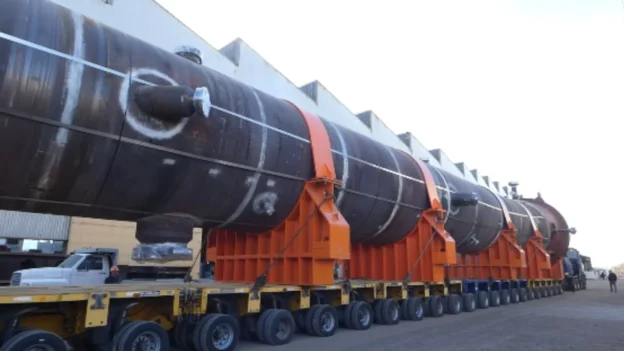The modernization of the Luján de Cuyo Industrial Complex took a step forward with the installation of the HG-D-3501 reactor, a unit designed to remove sulfur compounds from diesel fuel. diesel oil by means of a catalytic process using hydrogen.
This step, which is part of the New Fuel Specifications (NEC) project, marks a decisive advance in the production of fuels with a lower environmental impact.
A high performance reactor manufactured by IMPSA
The new reactor was built in Mendoza by IMPSA, under international standards. With a length of 38 meters and a weight of 456 tons, it was moved from Godoy Cruz to the YPF plant in a logistic operation that involved Vialidad Nacional, Mendoza Police and local authorities.
Rector’s tour to the Luján Industrial Complex. Source: IMPSA OFFICIAL
The part will be integrated into the HDS II unit, designed to reduce sulfur content in diesel to 10 parts per million, in line with current environmental requirements.
The NEC plan includes new process units, such as H2 II and SE33, the adaptation of existing facilities and the improvement of auxiliary services. Its execution, which already exceeds 85%, will allow all the diesel oil produced in Luján de Cuyo to comply with the highest emission requirements.
In addition, it seeks to ensure domestic supply of Infinia Diesel and increase the refinery’s operating capacity.
The project also brings benefits to the regional economy. It has generated more than 1,500 direct jobs and boosts the development of supplier SMEs. The magnitude of the work includes the use of 12,500 m3 of concrete, 2,700 tons of pipes and more than 470 kilometers of industrial cabling, consolidating the refinery as a strategic node in the country’s energy infrastructure.
Source: YPF
Photo: IMPSA

